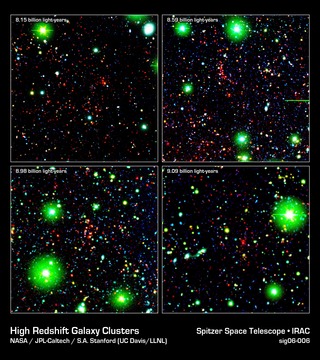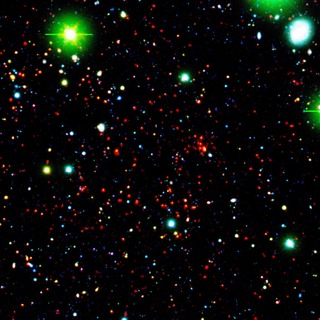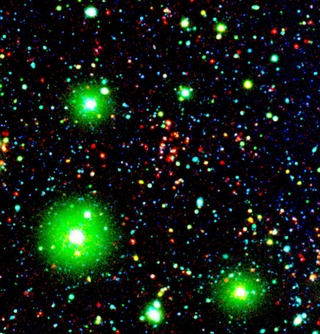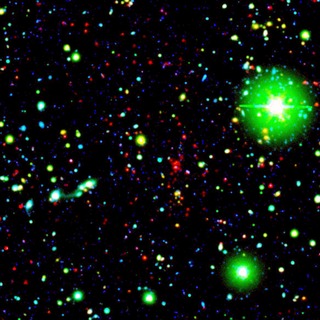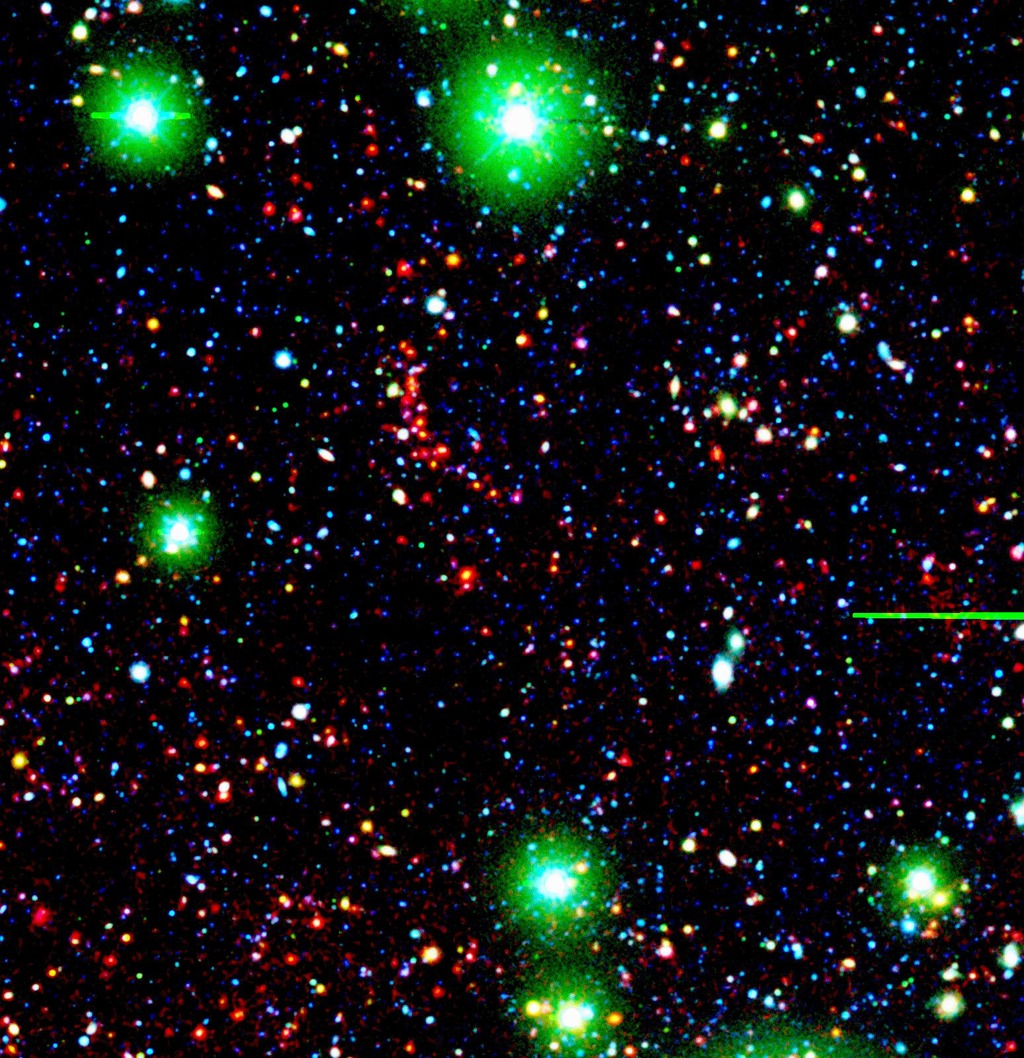
Credit: NASA/JPL-Caltech/S.A. Stanford (UC Davis/LLNL)
Observation • March 21st, 2006 • sig06-006b
sig06-006b
Like great friends, galaxies stick together. Astronomers using NASA's Spitzer Space Telescope have spotted a handful of great galactic pals bonding back when the universe was a mere 4.6 billion years old. The universe is believed to be 13.7 billion years old.
Collectively, these great galactic buddies are called galaxy clusters. A typical galaxy cluster can contain hundreds of galaxies and trillions of stars. In this composite, one of the oldest galaxy clusters in the universe poses for Spitzer's Infrared Array Camera. The individual galaxies that make up the distant clusters are shown as red dots.
The green blobs are Milky Way stars along the line of sight, and the blue specks are faint galaxies at various distances along the line of sight. The green and blue data are from a visible-light, ground-based telescope.
This image is a three-color composite, in which blue represents visible light with a wavelength of 0.4 microns, and green indicates visible light of 0.8 microns. The visible data were captured by the ground-based Mosaic-1 camera at the Kitt Peak National Observatory in Tucson, Ariz. Red represents infrared light of 4.5 microns, captured by Spitzer's infrared array camera.
About the Object
- Name
- ISCS J1434.5+3427
- Type
- Galaxy > Grouping > Cluster
- Distance
- 8,590,000,000 Light Years
- Redshift
- 1.243
Color Mapping
| Band | Wavelength | Telescope |
| Optical | 440 nm | KPNO 4m Mosaic-1 |
| Optical | 800 nm | KPNO 4m Mosaic-1 |
| Infrared | 4.5 µm | Spitzer IRAC |
Astrometrics
- Position (J2000)
- RA =14h 34m 30.4s
- Dec = 34° 27' 12.3"
- Field of View
- 0.0 x 0.0 arcminutes
- Orientation
- North is up
